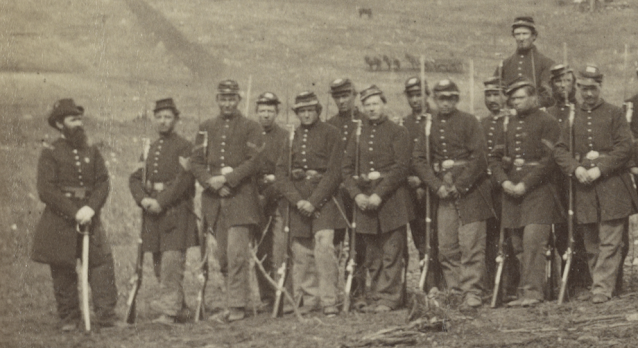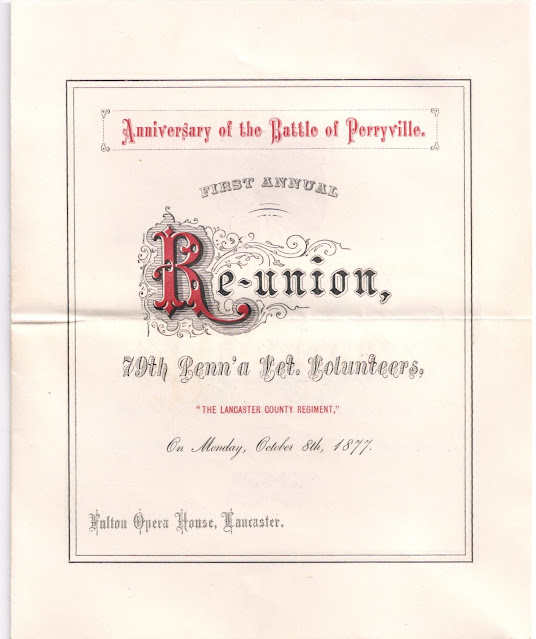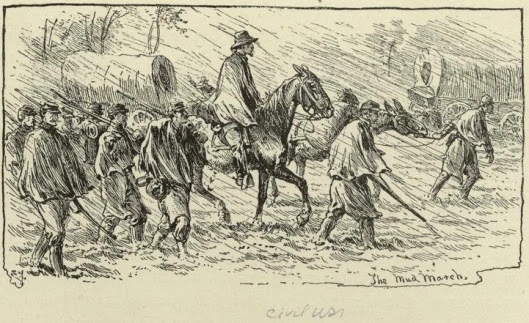T he 79 th Pennsylvania, part of Colonel John Starkweather’s brigade, was marching into action at the Battle of Perryville side by side with the 1 st Wisconsin. “As the solid, serried ranks of glistening bayonets and brave men moved onward with all the regularity and precision of a dress parade, and with the steadiness of veteran troops, the two regiments involuntarily paid just tribute to one another by sending up long and loud cheers,” one veteran recalled. “It was a grand sight! There was no flinching- not a man! Every man stood his ground firmly and manfully.” But out of the eyesight of our correspondent, one man did flinch, indeed, making a conscious decision to flee the battlefield. He can perhaps be forgiven this decision because as John D. Kautz marched onto the battlefield at Perryville, his German-born wife Barbara and infant son Christian accompanied him. It’s an interesting if rather convoluted story. Reunion card for the first regimental reunion for the



